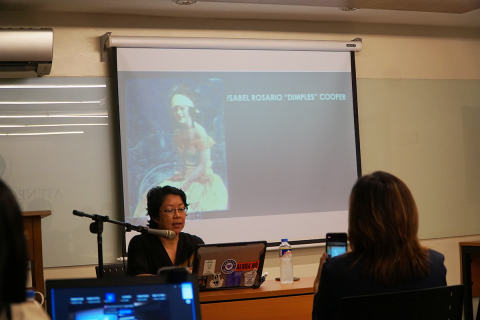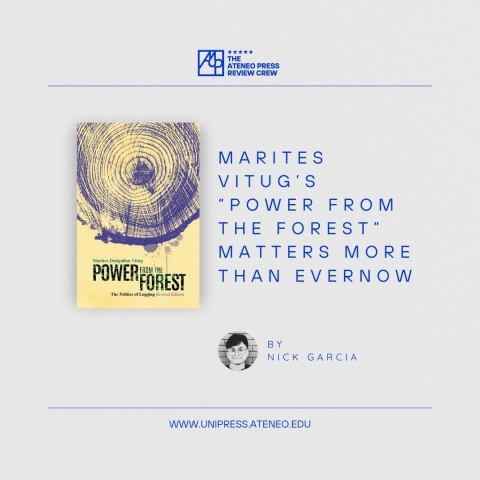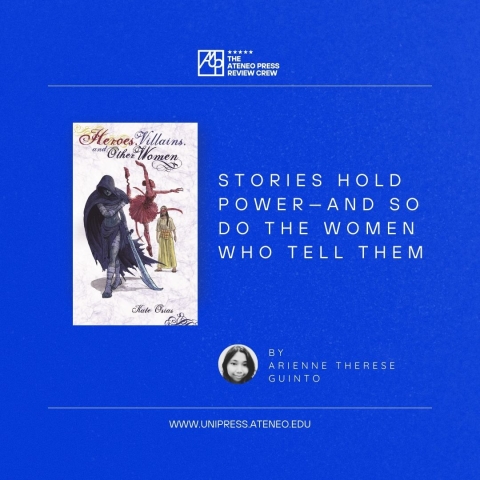[Ateneo Press Review Crew] “What it Means to Be Malaya”: A Pinay’s Diary on Girlhood with Grace, Grit, and Gossip
11 Jun 2025 | Dids Veneracion
Emmily Magtalas Rhodes’ What It Means to Be Malaya is a sharp, hilarious, and deeply moving exploration of Philippine identity as a woman. Humorously tackling issues like class, colorism, and religion, the story is told through the eyes of Bunny, an average Filipina and deeply perceptive narrator. The novel is a coming-of-age story set against the backdrop of Manila, where tradition, gossip, and social status dictate the rhythm of daily life. Despite its serious themes and crass tone, the book is a fun and easy read that is likely to have readers laughing out loud every few pages.
At the heart of the novel is Bunny’s relationship with her childhood best friend, Malaya—an enigmatic, light-skinned, girl raised by liberated parents. Where Bunny’s world is rigidly Catholic, peppered with outdated superstitions and run by a controlling, emotionally erratic and nagging mother, Malaya’s is unconventional, artistic, and permissive. Their friendship highlights the stark contrast between a traditional Filipino upbringing and a more carefree, independent lifestyle. This dynamic is not just a narrative device, but a mirror held up to Filipino society’s deeply rooted colonial mentality in its unhealthy obsession with Western ideals. Not to mention, the misconceptions stemming from the countless inaccurate beliefs in radical religion, perpetually challenging what Bunny perceives as logic and common sense.
The writing is rich with sarcasm and all too relatable anecdotes—from awkward discussions around sex and condoms, to the painful normalcy of verbal abuse, and the psychological grip of the Catholic Church. Rhodes captures the absurdity and hypocrisy of it all with a light but steady hand. The scenes featuring Bunny’s school life, particularly her interactions with overbearing nuns and the many surprising twists, are some of the funniest in the book.
The novel is an exemplary example of why it is important to read works by women. It unpacks themes on gender such as the role of the Church in shaping morality, the shame surrounding female sexuality, and the double standards placed on women. Bunny’s observations carry the weight of a woman constantly made to feel “less than” in a culture that rewards appearances (on the basis of how foreign you look), silence, and compliance.
Rhodes has written one of the most accurate portrayals of contemporary Pinay life—funny, frustrating, deeply flawed, and always layered. Contrary to the many Filipino stereotypes the story portrays, it resists melodrama—choosing instead to focus on quiet reckoning and self-discovery, making it a must-read for anyone seeking answers (or, more likely, deeper questions) about a woman’s place in Philippine culture.
In the end, What It Means to Be Malaya is less about Malaya and more about Bunny reclaiming her voice. It is a timeless celebration of the overlooked, the average, and the complex womanhood that thrives beneath the surface of a culture that so often tries to box it in. This book deserves a spot on every Filipino bookshelf—not just because it’s funny or familiar, but because it knows what it means to grow up here, to be shaped by things you never chose, and to make sense of them anyway.





![[AAG] Art Workshops - Cosmic Garden Poster](/sites/default/files/styles/large/public/2025-07/%5BAAG%5D%20Art%20Workshops%20-%20Cosmic%20Garden%20v2.jpg?itok=Z52TVwDS)


